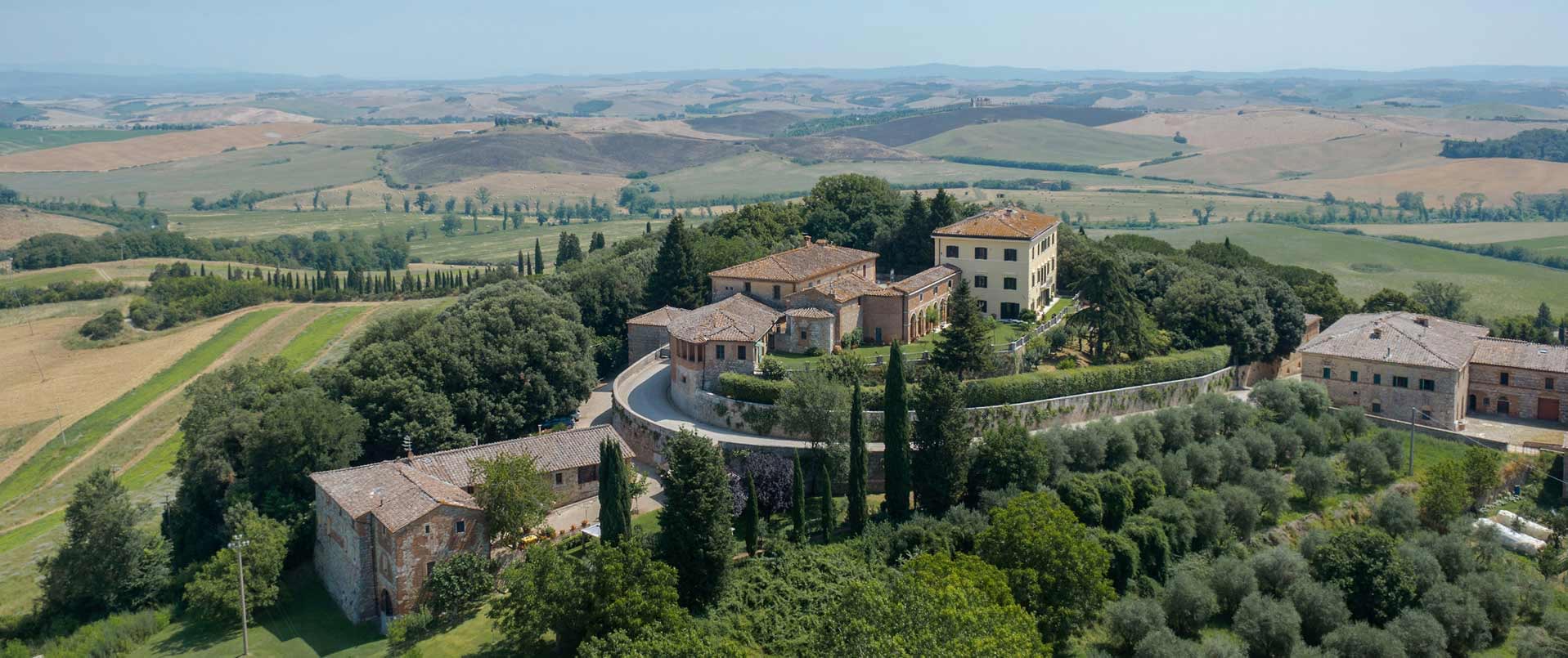
CIN Code: 0000
Castello di Magrano was a military fortress which was built in the 13th – 14th century to defend the town of Gubbio and later the Duchy of Montefeltro. It features a large rectangular tower-palace, to which two wings were added to the west and south, creating an inner courtyard with a crenellated enclosure wall and a curved access ramp. An external curved military building was converted into a chapel at the end of the 17th century, while during the same period, a Foresteria Guesthouse and Stable were erected alongside the southern side of the boundary wall, which is today directly connected to the Castle.
The history of Castello di Magrano
The Castle of Magrano was founded at the end of the 13th century as a country villa, but a century later it became a fortified stronghold under the Municipality of Gubbio. It subsequently came under the command of the Dukes of Montefeltro, who appointed figures of standing, like jurist Benedetto Barzi, as its governing castellans. At the end of the 16th century, Magrano returned to being a residence for prominent families such as the Della Porta and Carpegna dynasties, who had two members appointed as bishops in Gubbio in the 17th century. In the early 1800s, the Castle came under the ownership of the Gabrielli family originating from Roma and Gubbio, who were related to the Bonaparte family. In the mid-19th century, Giulia Bonaparte, Napoleon’s niece, acquired the property, after which it passed to her son Luciano del Gallo di Roccagiovine, who was part of a wealthy Roman family with ties to the Papacy. In the early 20th century, Luciano initiated an initial consolidation of the Castello, but it was not until the mid-1970s that a major historical and artistic restoration was begun by his nephew Luciano Filippo Giunta. The work was completed in the 2001- 2010 decade, with its transformation into a country hotel.
Facilities and services at Castello di Magrano
The residence has twelve rooms and an apartment. The bedrooms, comprising three doubles, seven doubles and two suites, are all furnished with antique furniture and are superior in terms of their amenities and services (there are two whirlpool baths and there is a mini pool in the room). The attic apartment consists of two double bedrooms, two bathrooms and a small living room with a kitchenette. Hospitality includes half-board and a light lunch service. For groups of at least 10 people, dinner service with a chef and waiting staff is available for an additional cost, to be agreed. It is also possible, upon request, to organise courses, such as gilding, small-scale restoration and decoration, cooking courses and wine-tasting with professional sommeliers. Guided tours can be arranged of the farm’s wildlife-vegetation area (in the presence of deer, fallow deer, wild boars, hares and pheasants), truffle hunting with trained dogs, and sport fishing on the Chiascio River.
Places of interest in the vicinity
UNESCO sites nearby: staying at Castello di Magrano is an excellent choice for those wishing to organise a visit to the city of Assisi.
 Co-Working
Co-Working
 Film sets
Film sets
 Gardens
Gardens
 Parks
Parks
 Private events
Private events
 Spirituality
Spirituality
 Weddings
Weddings
 Cooking courses
Cooking courses  Cultural tourism
Cultural tourism  Cyclotourism
Cyclotourism  Gardens
Gardens  Hiking
Hiking  Nature
Nature  Restaurants
Restaurants  Sports
Sports  Tasting
Tasting  Wine tourism
Wine tourism